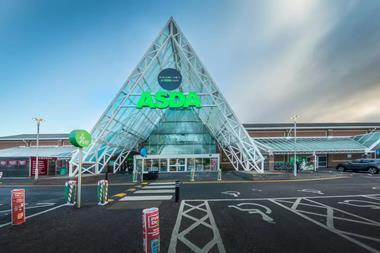Safeway this week revived the long running debate on effective food labelling with a survey which suggests most consumers still do not understand basic nutritional information on food.
It questioned 994 men and women aged 25 to 64 for the Eat Smart report and discovered that 24% found labels confusing, giving information in baffling language with too many facts and figures. Safeway head of new product development Judith Batchelar said: "Our research will help us pioneer healthy, clearly labelled foods and provide practical nutrition advice that helps our customers on the route to a healthier lifestyle."
Safeway found shoppers said they did not understand labelling jargon.
For example 78% did not know that RDA stood for Recommended Daily Allowance.
Some 93% said working out the nutritional content of food was more difficult than changing a plug, reading a map, or setting a video.
The Safeway survey suggests food labelling is no more user-friendly than in the mid-1990s when the Co-operative Group canvassed 30,000 consumers.
Even then, before information catering for those with special dietary needs or preferences was widely included on labels, two out of three people wanted to see labelling clarified, and 90% did not understand what it meant.
Co-op marketing development manager Susan Bromley said: "We have always led the way on labelling. We constantly review labelling practice. It's about explaining to allow people to make the choice. We would never say RDA."
The Food Standards Agency said its own recent research showed that consumers were confused by the nutritional information on food labels, and it aimed to cut through the jargon.
An FSA action plan on food labels, tackling ingredient listing, country of origin labelling, production methods, simplifying food labels, date marking, nutritional labelling, misleading claims and information is due to be published shortly.
{{NEWS }}
Close menu
- Home
- Retail & Wholesale
-
Products & Suppliers
- Back to parent navigation item
- Products & Suppliers
-
Product Categories:
- Back to parent navigation item
- Product Categories:
- Alcoholic drinks
- Bakery
- Cereals & breakfast
- Cheese
- Chicken & poultry
- Chocolate
- Confectionery
- Crisps, nuts & snacks
- Dairy
- Fish
- Fresh produce
- Frozen
- Household
- Meat
- Own Label
- Sauces & condiments
- Seasonal
- Soft drinks
- Vaping
- Vegan & plant-based
- World foods
- Suppliers
- People
- Reports & Data
-
Topics A-Z
- Back to parent navigation item
- Topics A-Z
-
Popular topics:
- Back to parent navigation item
- Popular topics:
- Cost of living crisis
- Crime
- Deposit Return Schemes
- Finance
- Government & Regulation
- Health
- Inflation
- Loyalty
- Marketing
- Mergers & Acquisitions
- New Product Development
- Sourcing
- Supply chain
- Sustainability & environment
- Technology
- Ultra Processed Foods
- Vaping
- A-Z all topics
- Content by type:
- Events
- Ask iA (beta)
- Subscribe now
Sign in to comment on this article
Not logged in before? Register for FREE guest access today.
You will be able to:
- Read more stories
- Receive daily newsletters
- Comment on stories
Advert

















No comments yet